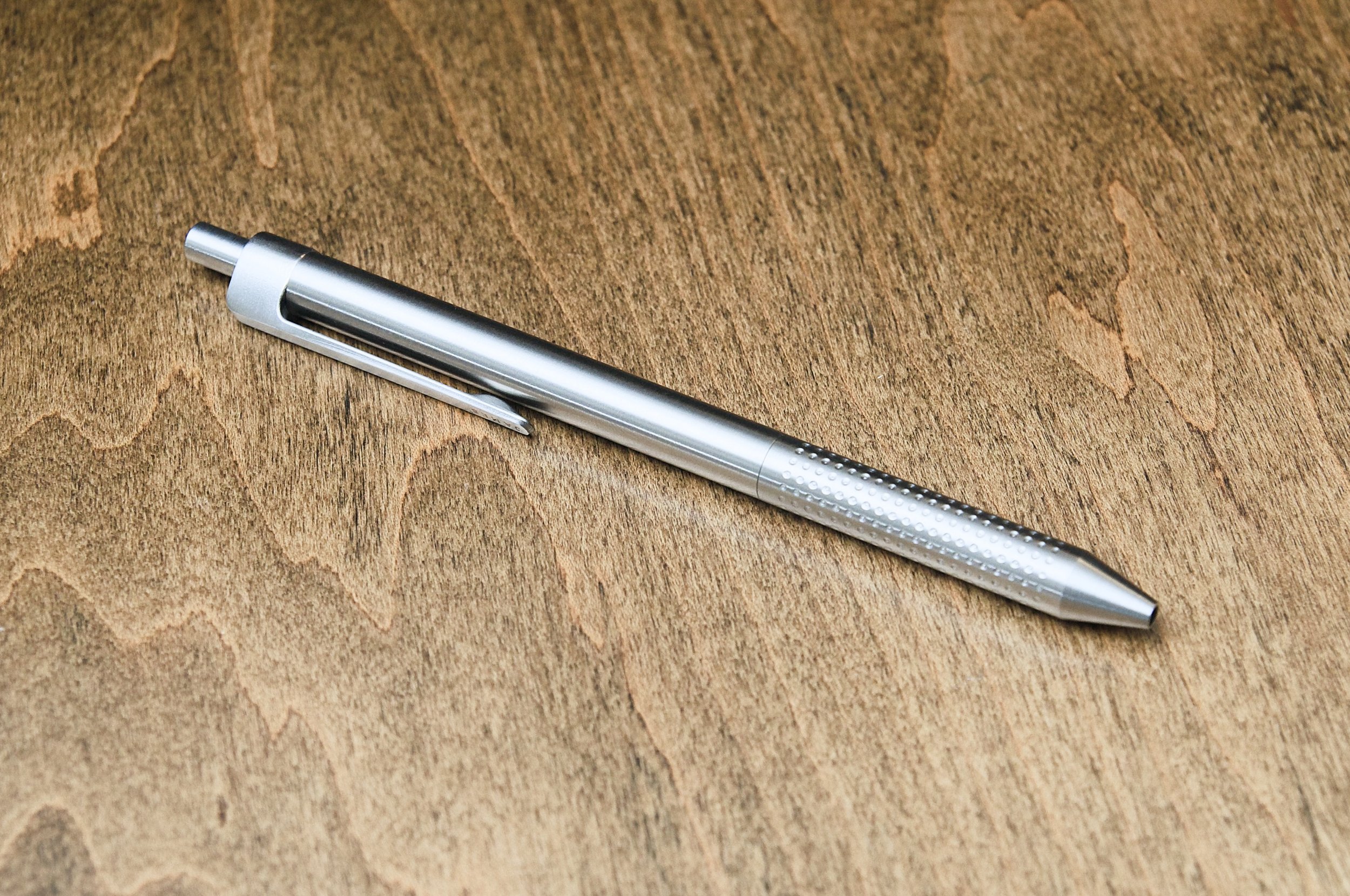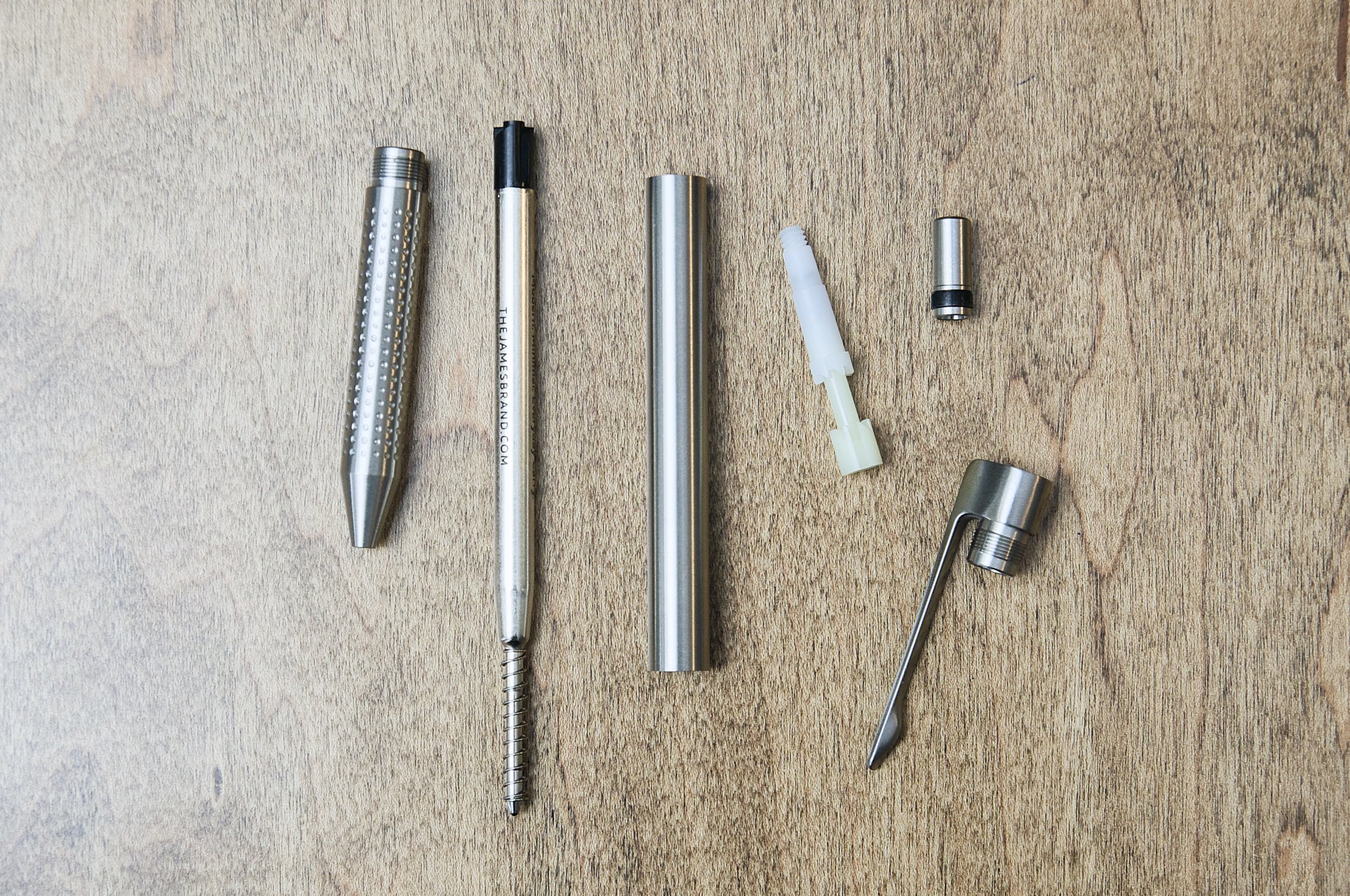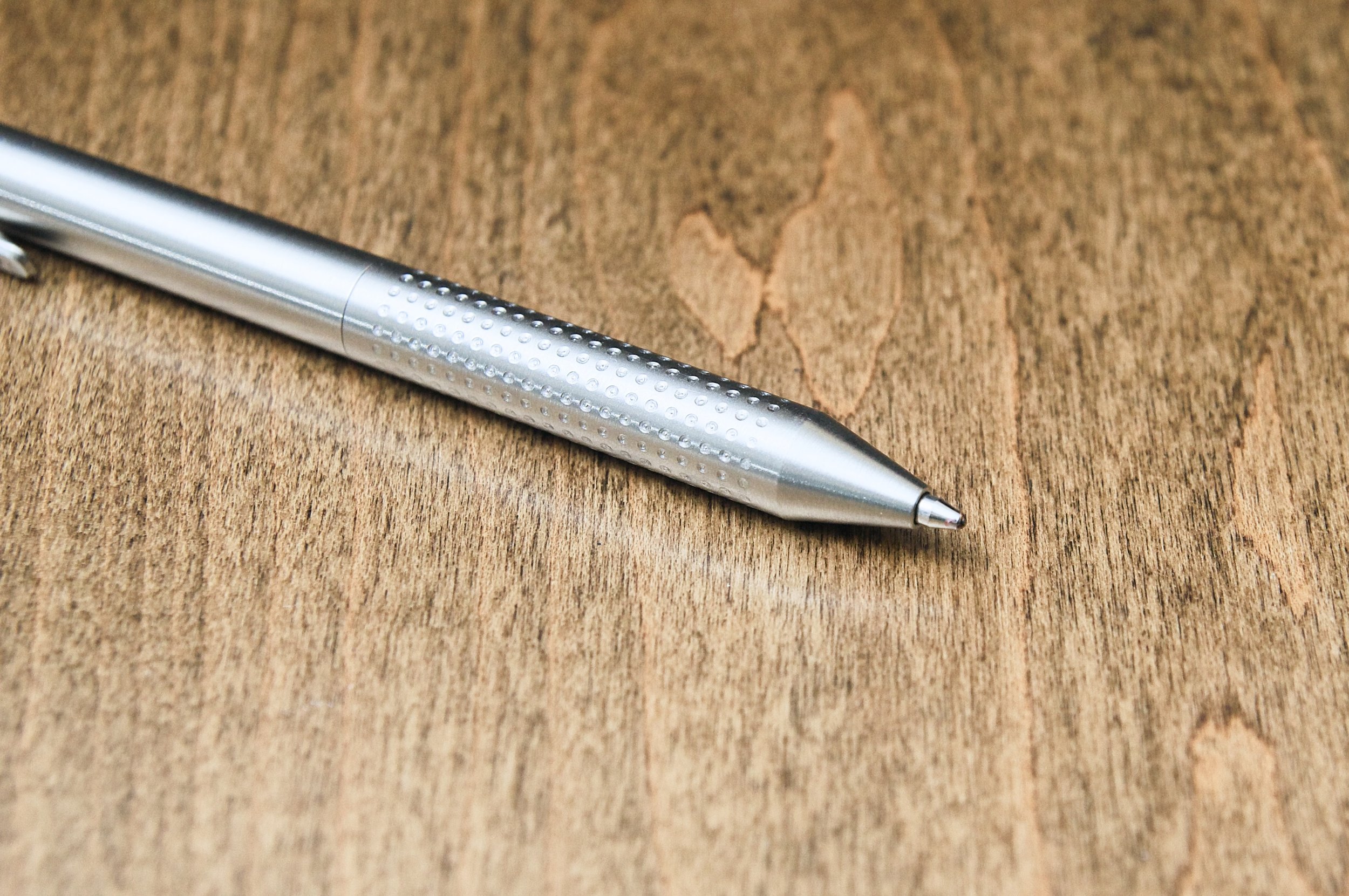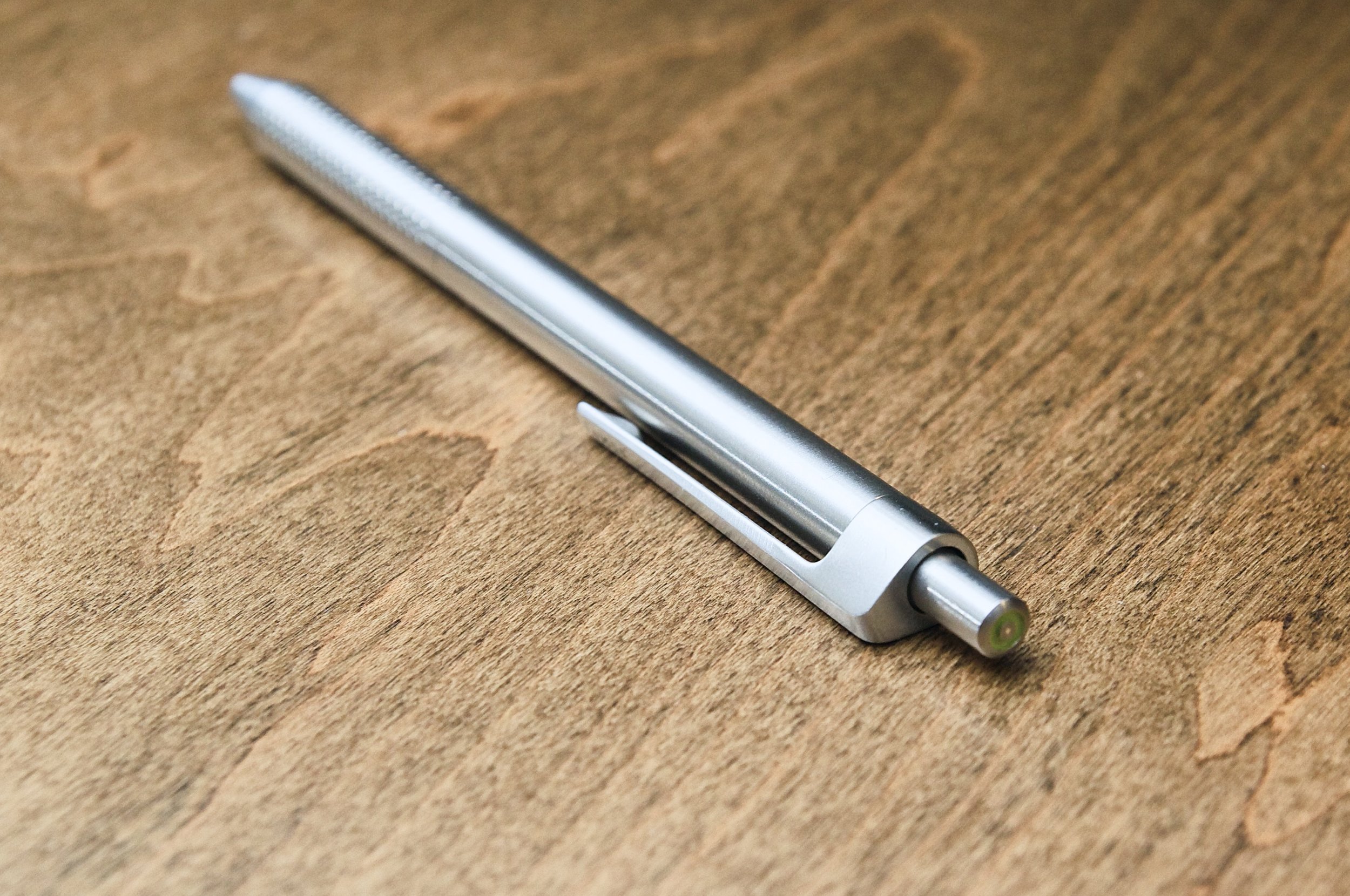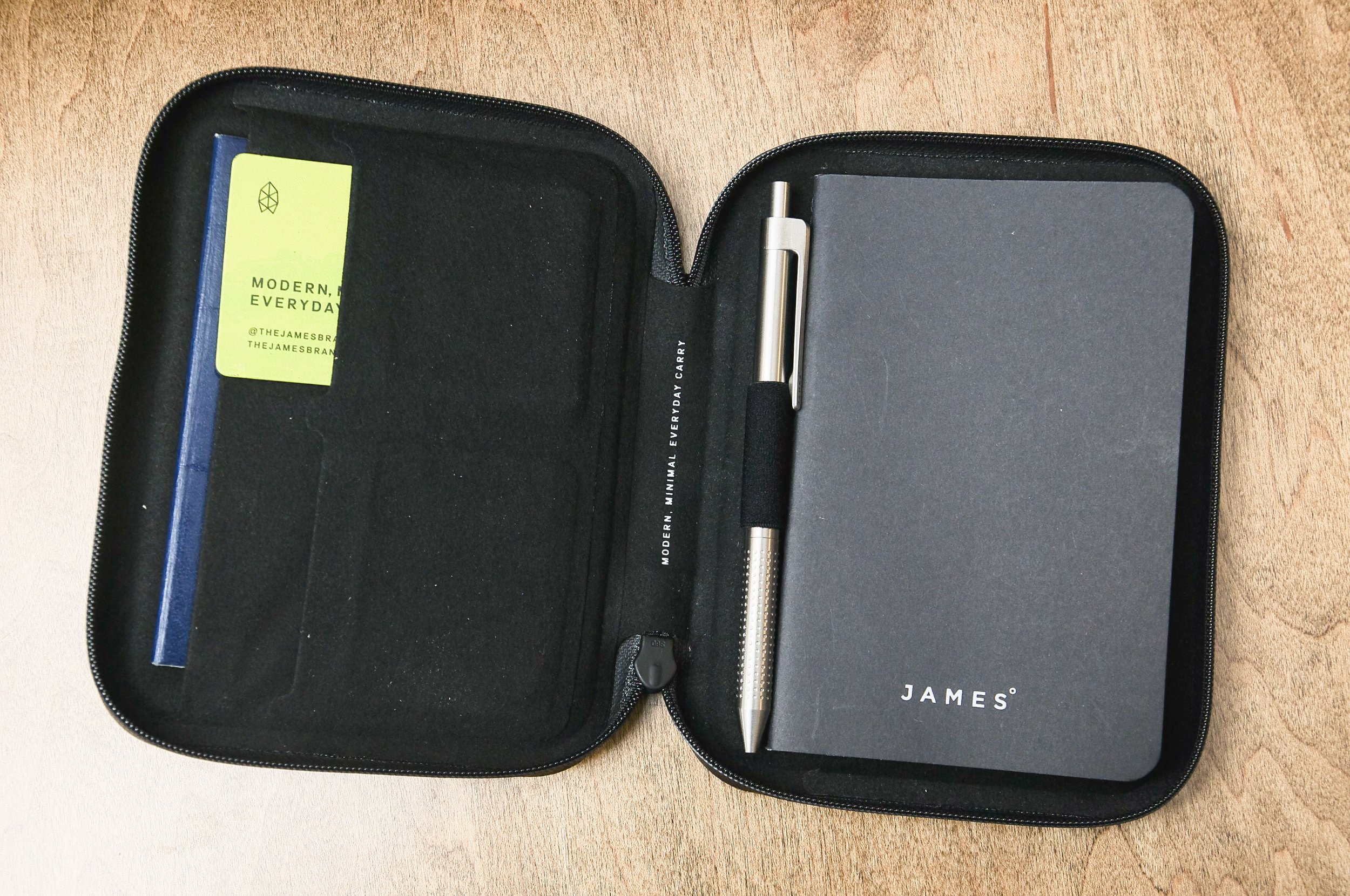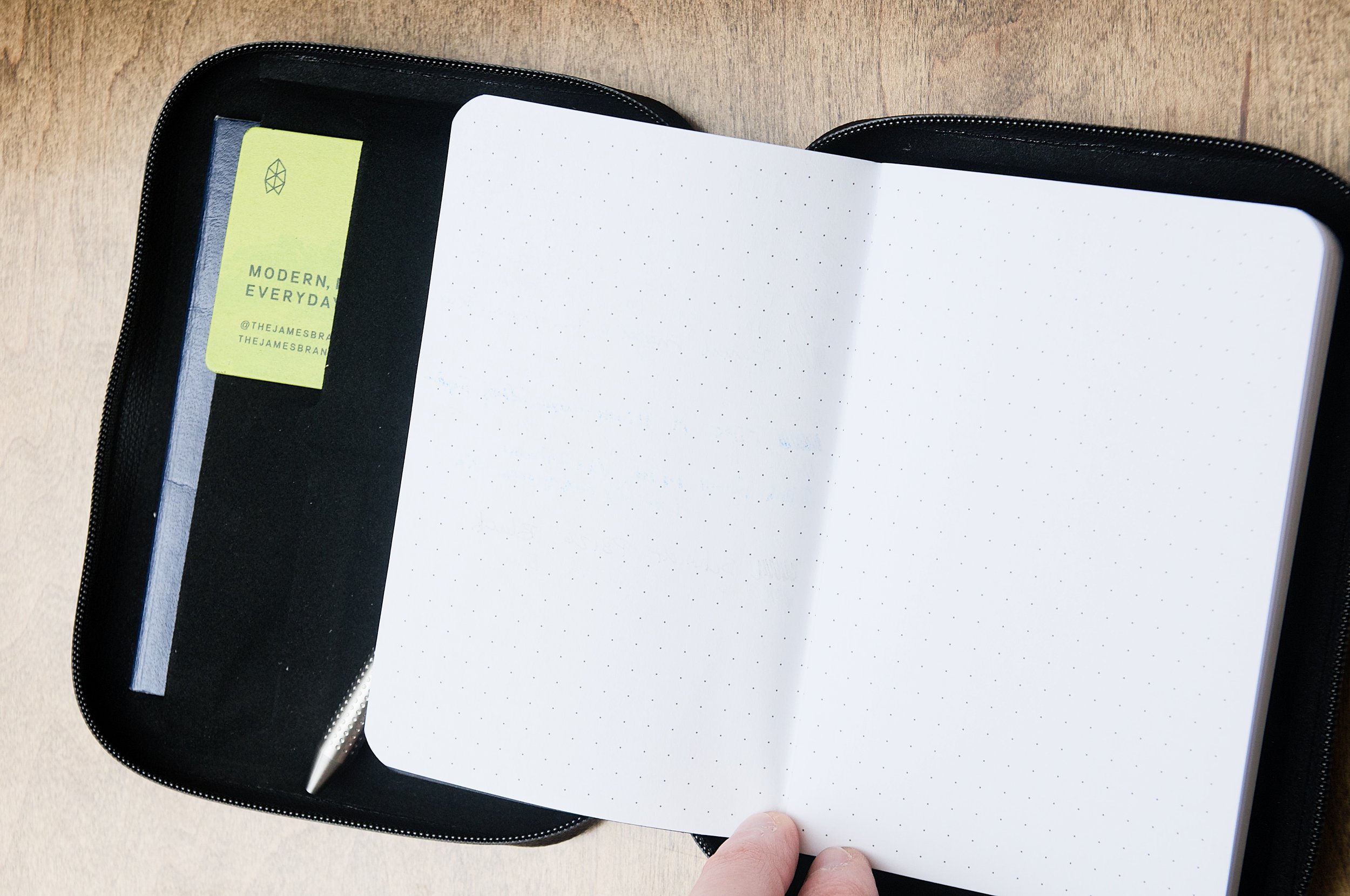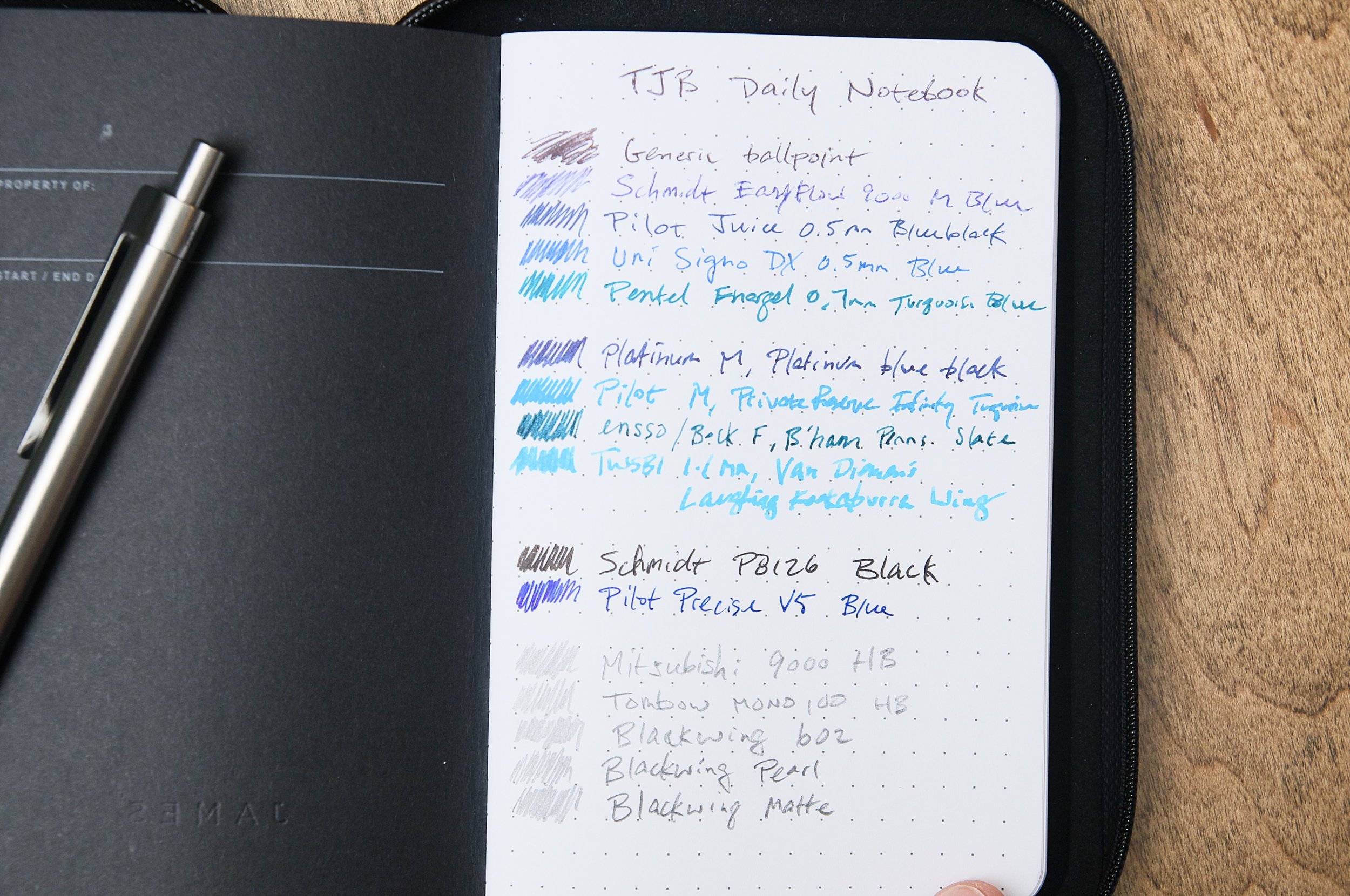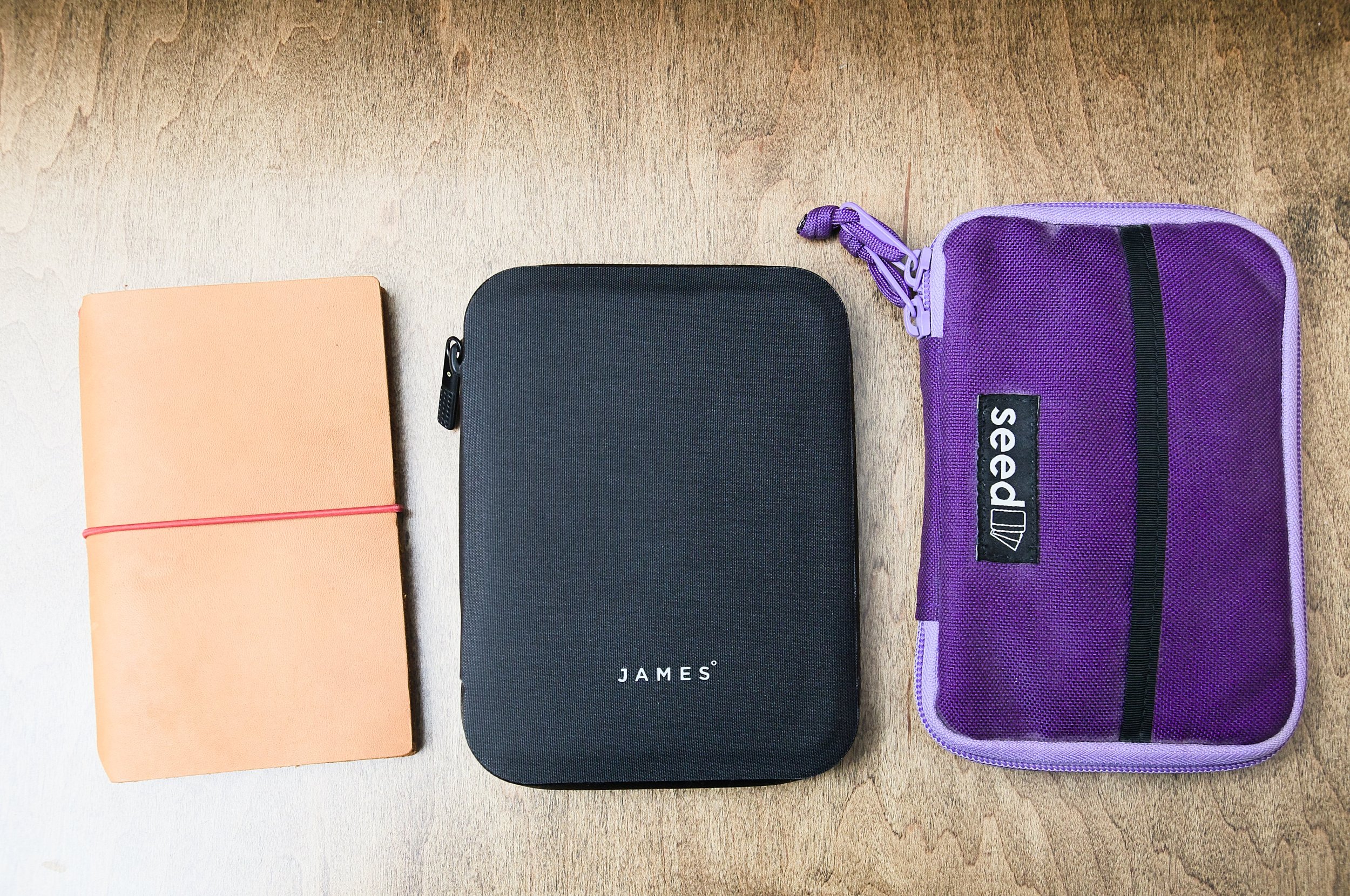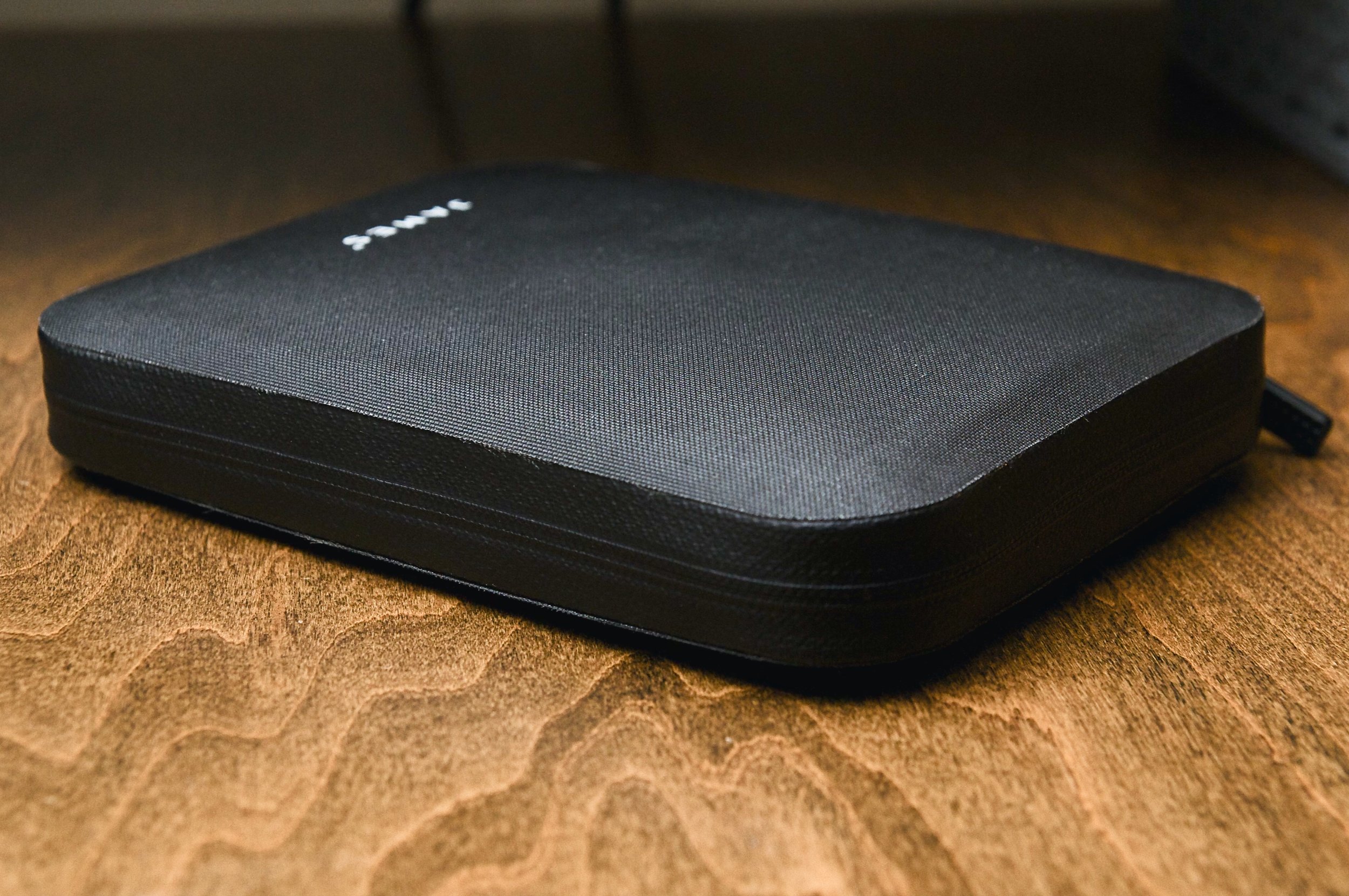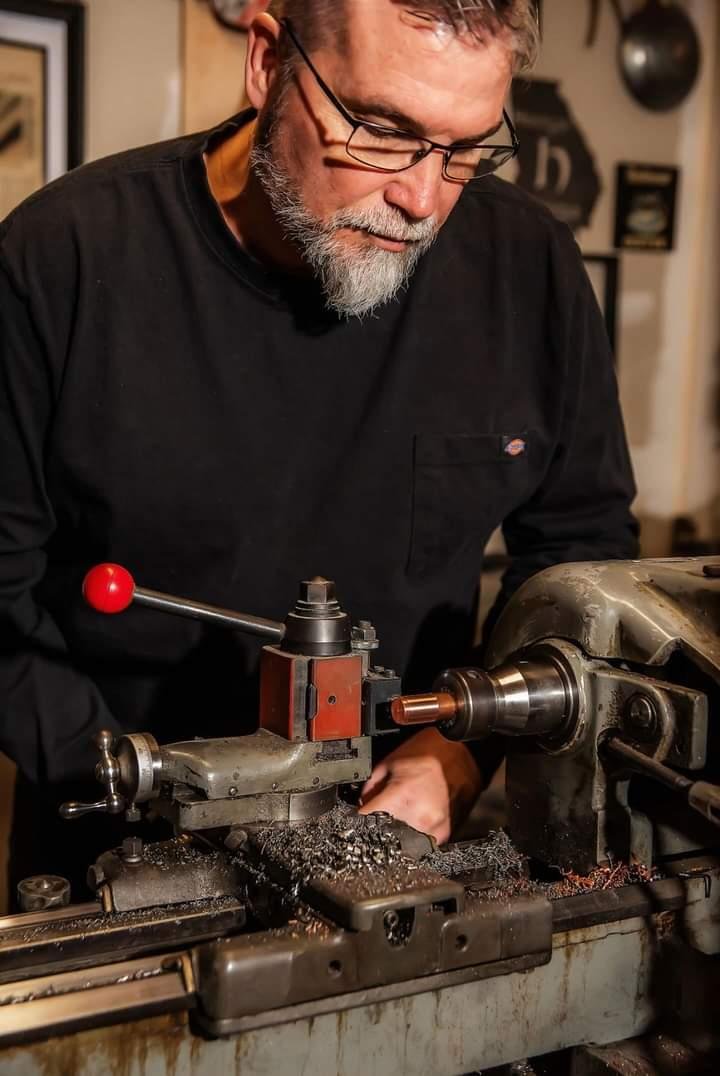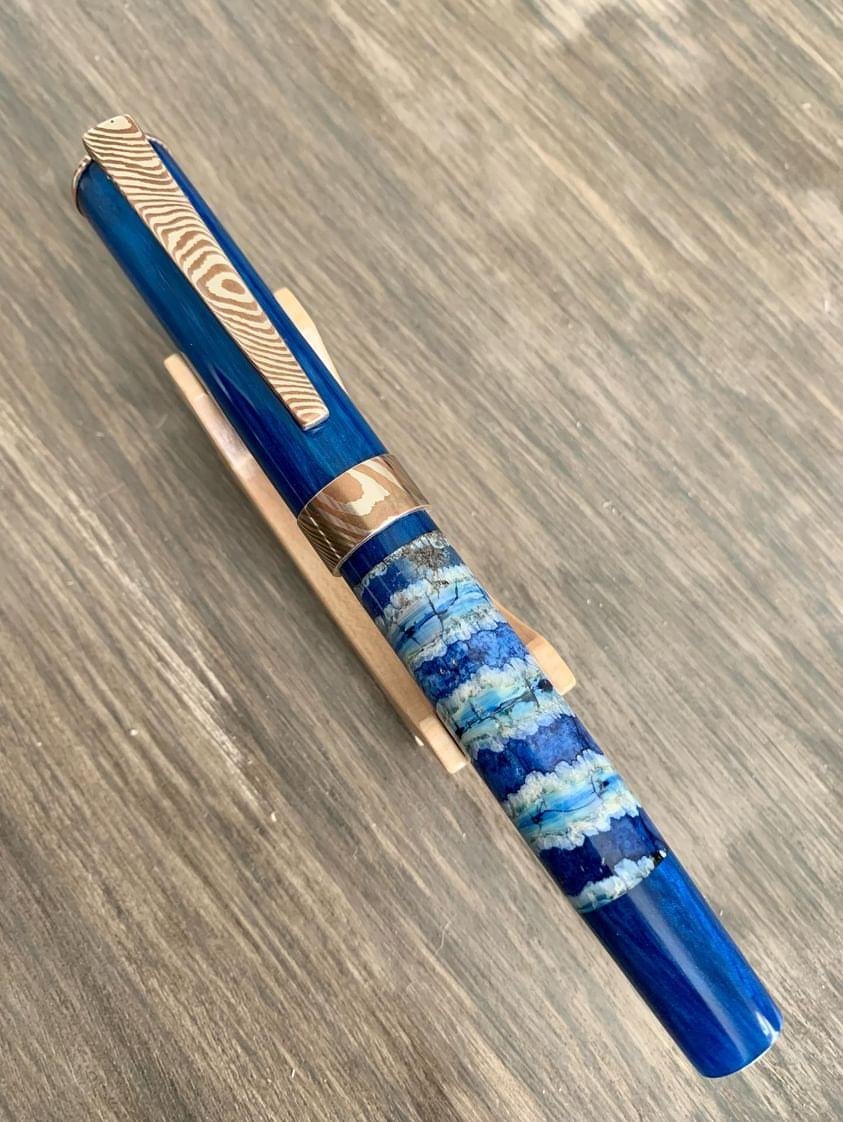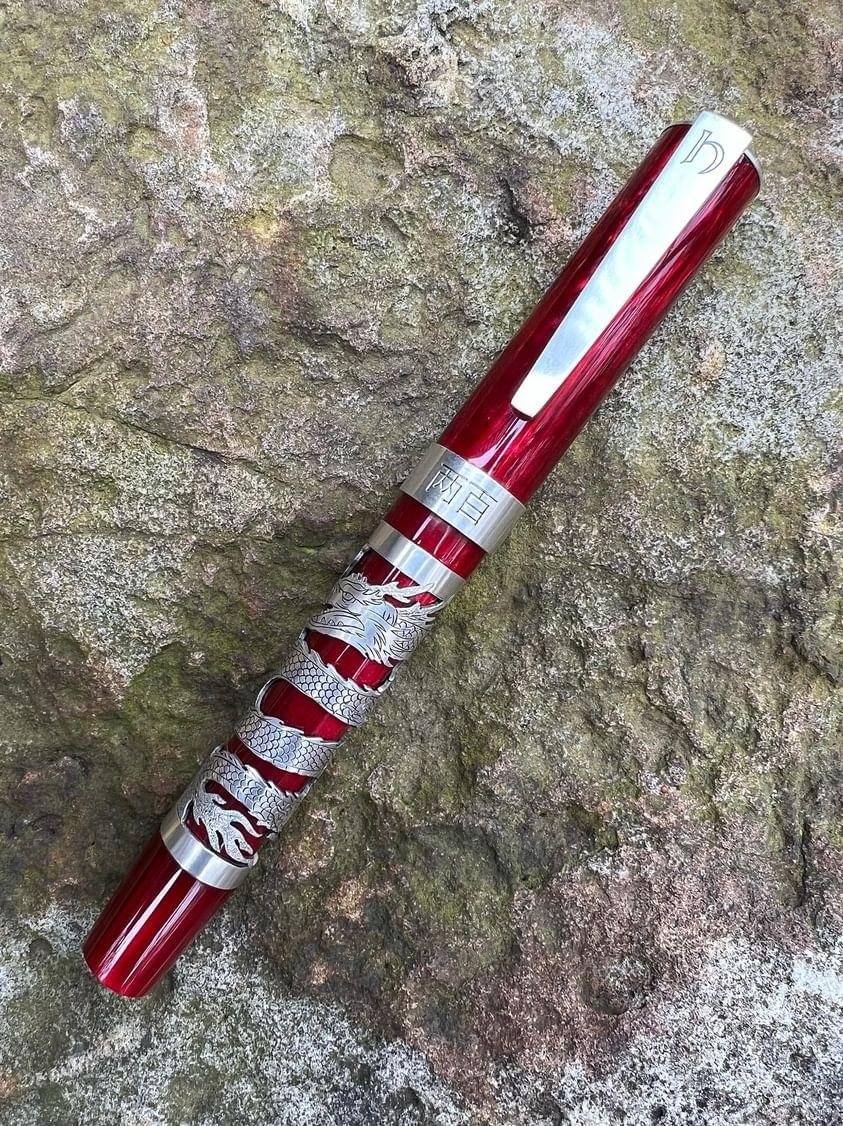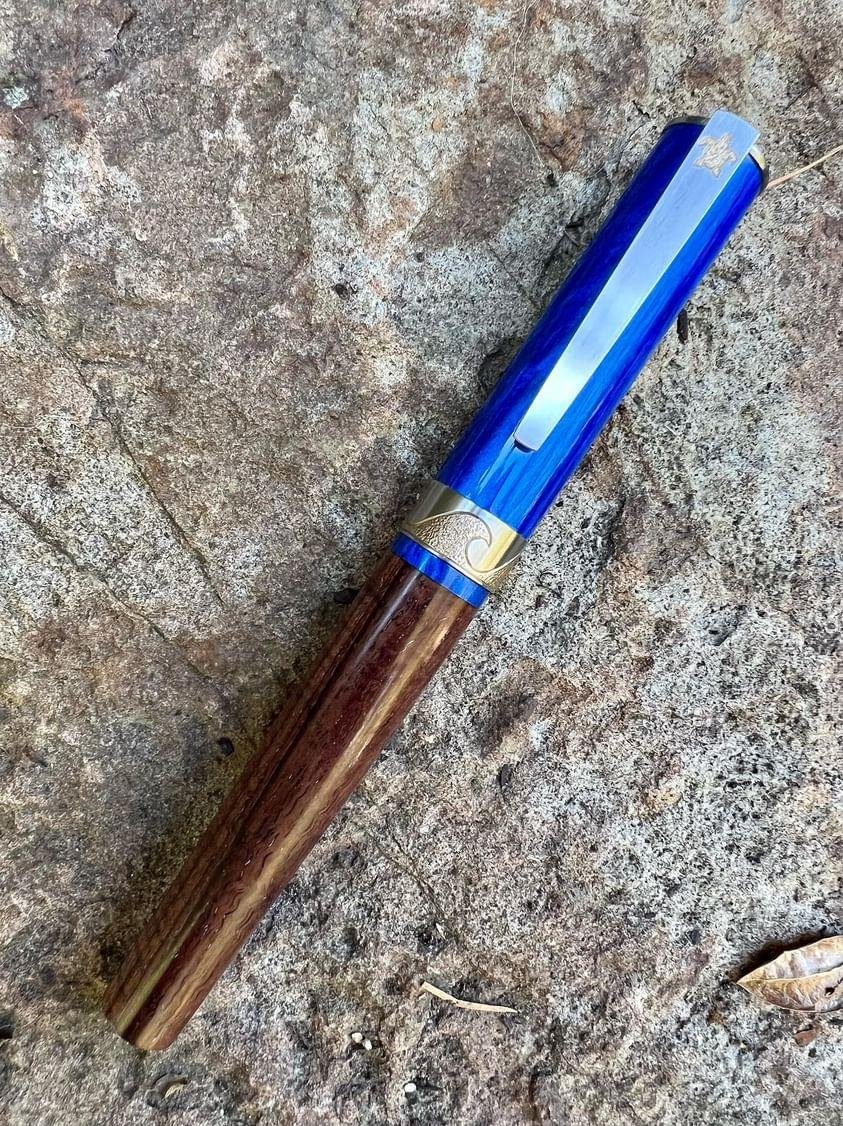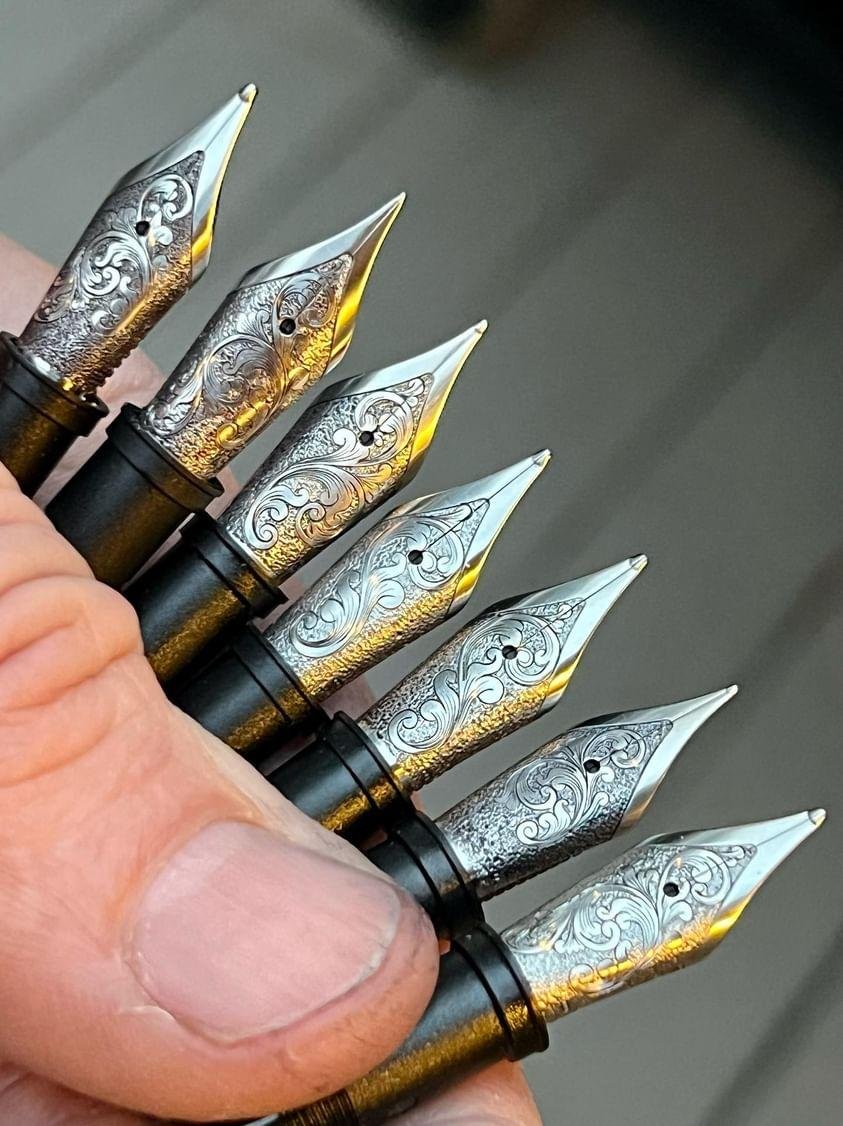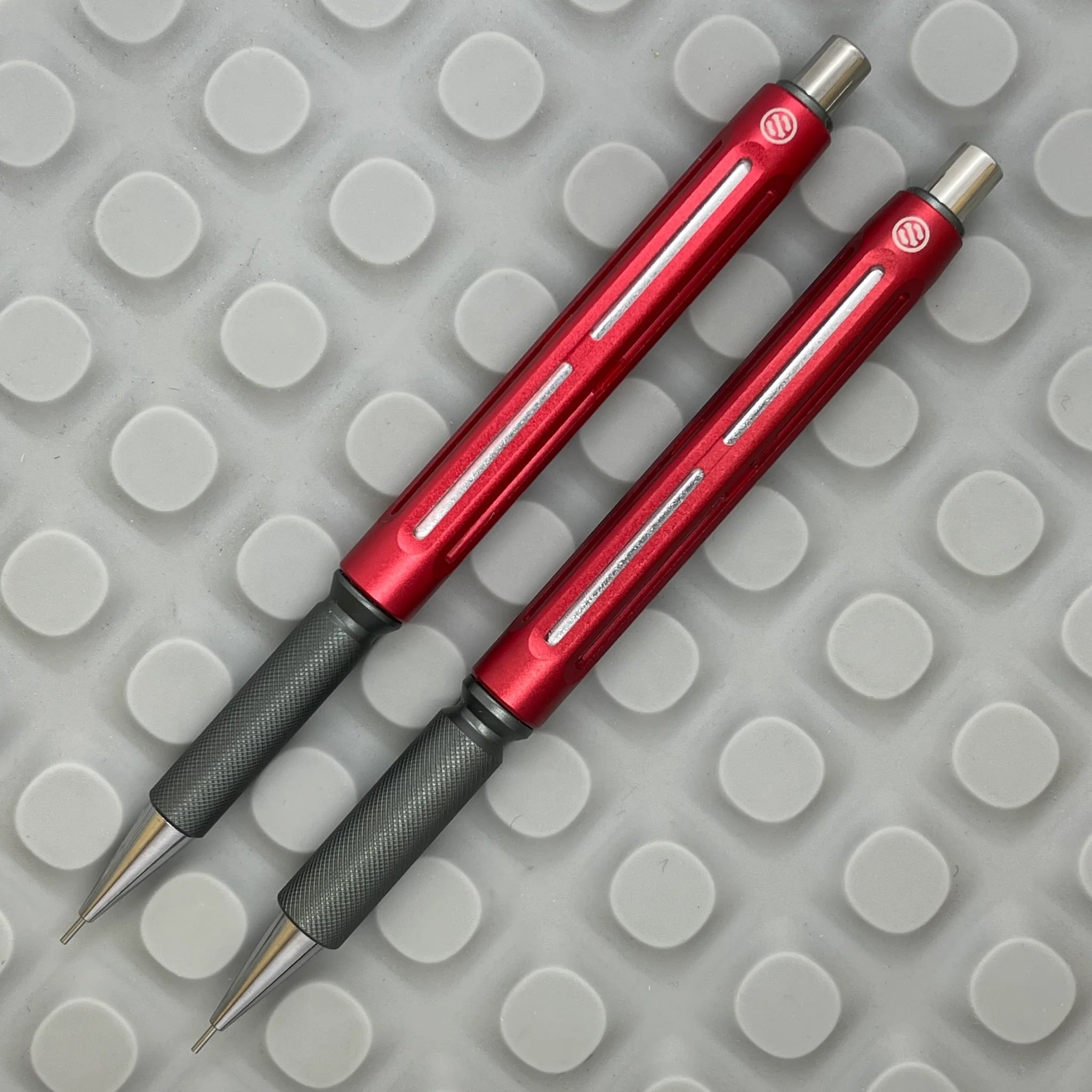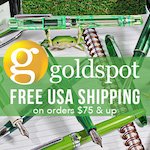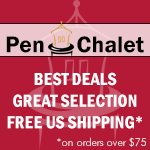(Jeff Abbott is a regular contributor at The Pen Addict. You can find more from Jeff online at Draft Evolution and Twitter.)
A good notebook, reliable pen, and a case to carry them in is a fantastic match when you find the right products that compliment each other in the right ways. It's an ultimate out-and-about carry package that can test your ability to carry the absolute minimum while still having what you need. The James Brand has their own take on a perfect setup that includes a sleek ballpoint pen, a pocket notebook, and a robust case to hold it all (and a bit extra) in style.
The whole package you see here isn't available as one product; rather, it's two products (and I guess three if you count the notebook separate). Let's look at each one individually first.
The Burwell
Up first, let's talk about the ballpoint pen. The Burwell is a sleek pen machined from stainless steel. In this review, I have the clean stainless version, but you can also get it in a rose gold or black colorway. The pen uses a standard Parker-style refill, which is also known internationally as the G2 refill, and is not the same thing as the Pilot G2 refill. I'm a big fan of the Parker refill for machined pens because you have so many different choices for what refill you want to use. The refill included with the pen is a black medium point cartridge that performs on par with a Parker Quink cartridge — not great, but not bad. It starts writing promptly and delivers a consistent line, but that line isn't as bold or as wet as I like.
Since the included refill is the least exciting thing about this pen, I'm not too worried about this not being an absolute star writer. I can swap in something that works better for my taste.
The pen overall is really slim. It's about the same diameter as a standard Parker Jotter, but without the aggressive taper toward the tip. The shape works really well in my hand, and the small taper on the nose cone of the pen provides plenty of grip along with the machined dot pattern along the grip section. The machined craters provide grip, but they're machined and polished really well so that you don't feel any hard edges. They manage to find a sweet spot between too grippy and not grippy enough. That's a tough line to balance!
The rest of the pen is built well. The upper part of the body is a simple cylinder, and the clip is an integrated part of the pen body that encloses the click mechanism. The clip is really strong and does a great job of securing the pen to other things. The clip also has "James" etched into it to signify the brand.
The click mechanism makes a really satisfying "ker-thunk" sound that sounds bigger than it should when coming from such a slim pen. I really like the sound it makes and how it feels in my hand. There's definitely zero guess-work on whether or not you've successfully extended or retracted the refill.
On the very end of the click mechanism, there's a ring shape machined into the end that has a neon yellow/green finish. I didn't notice it at first because it's so recessed, but I really like it now that I know it's there. I was more excited at first because I assumed it would glow in the dark, but that's not the case. It doesn't glow, but it still looks cool.
I have no doubts that this pen will last a very long time. It feels durable and well-made, so as long as the knock mechanism is equally long-lasting (even though it's made of plastic), this pen should last longer than any of us.
My only complaints about the pen are that it's a little on the heavy side for how slim it is, the balance is too far toward the back of the pen for my preference, and the refill moves around too much when writing. Due to the weight, I haven't wanted to write with this pen for more than a couple of minutes. The heft and solid feel make for an impressive entrance, but it takes away from the overall usability. The refill moving around while writing translates to noise and a sense of instability since the writing tip moves ever so slightly every time you pick up point as you're writing. I'm sure it doesn't actually affect my writing, but it feels like it does because I can't help but notice the sound and movement.
The Burwell is $69 and available in plain stainless finish, rose gold, or black.
The Daily Notebook
Along with the pen, we have a standard-size pocket notebook. This 3.5 x 5.5" notebook is bound with black stitching and has 48 pages of white dot grid paper inside. According to the marketing page, the paper is "157GSM art paper." It certainly doesn't feel any thicker than your standard 80 gsm paper, so don't worry about that spec too much.
In my testing, the paper does a wonderful job with the different inks I tried with it. The paper has a lot of feedback and tactile feel while still being smooth, and I couldn't get any of my currently inked fountain pens to bleed or feather on the paper. I was even surprised to find minimal show-through on the back side of the page.
The corners of the notebook are rounded off so that they don't snag easily, and the dot grid is a great ruling that provides plenty of structure without getting in the way. There aren't any page numbers or date lines — just the dots. The front of the notebook has a couple lines to write your name and the dates that you used the notebook, but nothing else. Since the cover material is black, I'd recommend finding a nice light-colored pen to write with so that it shows up easily.
The notebooks come in a pack of 3 for $15, but you also get a single notebook included with the Gatecliff case. For the quality and performance, this is a fair price that also lines up pretty closely with all the other pocket notebook options. If you'd rather stick with something you know, they also sell a James Brand branded pack of Field Notes for the same price.
The Gatecliff
The Gatecliff is an interesting notebook case that looks different than anything else I've seen in recent memory. I think this is mostly due to the weather-resistant zipper and unusual method for attaching the cover and zipper together. Weather-resistant zips are really trendy right now, and I'm ambivalent toward it since I don't find myself in rainy or wet environments often. The Cordura nylon cover is incredibly thin and is "welded" to the zipper in a way that there aren't really any seams. It looks really cool, and I hope that it is also durable. I've never used a product like this long-term, so I'm not sure what to expect with this over a traditional stitched seam.
The front exterior cover of the case has a big "JAMES" logo, but no other branding or text. Unzipping the case, you'll find two sides that each hold specific items. On the right side, there's a sleeve that holds the pocket notebook in place, along with a small elastic pen loop close to the interior spine. Standard layout, and it works well in this case.
The spine is adorned with a "MODERN MINIMAL EVERYDAY CARRY" slogan in bright white. I'm not a fan and wish it wasn't there. For me, it ruins the really awesome blacked-out aesthetic on the interior of the notebook.
The fabric used on the interior of the case is a soft felt-like material. I'm not sure what it is, but it feels like a super-thin felt that's also more durable than typical felt. Time will tell how durable it is, but for now it seems to hold up to typical use.
On the left side of the interior, there are three pockets. There's one full-length sleeve that can hold a passport or anything else of a similar size. It can also hold the cover of another pocket notebook if you want to double up with notebooks!
On top of the sleeve, there are two smaller sleeves that fit cards. These pockets can hold about 3 credit cards each, but even a single card feels very secure. I'm not worried about anything sliding out, but there's additional security there since the whole thing zips shut.
I've never been one to use a notebook case or phone case as a wallet, but I can see the allure. Especially if you're traveling, this little case can be a great place to keep your passport, cards, a notebook and pen for jotting down notes, and a place to store small bits of paper you need to save for later. And, it can probably keep all of that stuff safe if you decide to go for a swim with it or get caught in a monsoon.
Once you add a passport, some cards, a pen, and a notebook to the case and zip it up, it feels way too empty. The case is much thicker and can actually hold an additional three pocket size notebooks (!) without starting to feel like it's packed too full. For testing purposes, I actually fit another 2 notebooks before it was difficult to close. That's a total of 6 notebooks, a passport, some credit cards, and a pen. The downside of adding notebooks (or any other objects) to the case is that they have to float in the middle of the case and require you to be more careful when opening/closing the case. I feel like there's an opportunity here to either slim down the case or add some better organization, but The James Brand haven't done that yet.
The Gatecliff comes in at $119, which is a little difficult to swallow. For my tastes, the function and style of this case doesn't justify the price tag. The weather-resistant zipper looks great in photos, but it does make the task of opening and closing the case a little more difficult compared to normal zippers. For my money, I'd rather find something that is hand-made and can pack in a little more functionality.
The Whole Package
As a whole package, this is a sleek little notebook setup. Picking up the pen, case, and some extra notebooks will set you back about $200. The pen is made of solid steel and uses a ubiquitous refill. The notebook works great. The case has a unique aesthetic and a fancy zipper.
The James Brand have been around a while, and you've probably heard of them because of their knives. In the case of their stationery (or Communication) tools, it's a bit of a mixed bag. I can say with confidence that if the aesthetic speaks to you and the price seems fair, you won't be disappointed. The pen is solid, the notebooks are great, and the case is a decent case.
For me, I'm left feeling a little disappointed by the pen (The Burwell) due to the noise and movement of the refill tip when writing, and then the slightly heavy feel that makes writing anything more than a few notes a little uncomfortable for me compared to other pens I use. The notebook (The Daily) is a great option as a pocket notebook. The paper specs on their site are a bit strange, but that doesn't matter because these notebooks work great. And they're priced competitively. My biggest disappointment is with the case (The Gatecliff). I was initially intrigued by the all-black matte aesthetic, but was quickly annoyed by the bright white branding choices, the cumbersome zippers, and the fact that the case doesn't hold nearly as much as the exterior size would lead you to believe. The price tag for the case is the final nail in the coffin for me. It just doesn't feel like it justifies the $119.
All that said, there's always room for improvement and more experimentation! Lucky for us, there's no shortage of choice when it comes to highly specific and subjective stationery items that fit our unique tastes.
(The James Brand provided these products at no charge for the purposes of this review.)
Enjoy reading The Pen Addict? Then consider becoming a member to receive additional weekly content, giveaways, and discounts in The Pen Addict shop. Plus, you support me and the site directly, for which I am very grateful.
Membership starts at just $5/month, with a discounted annual option available. To find out more about membership click here and join us!


